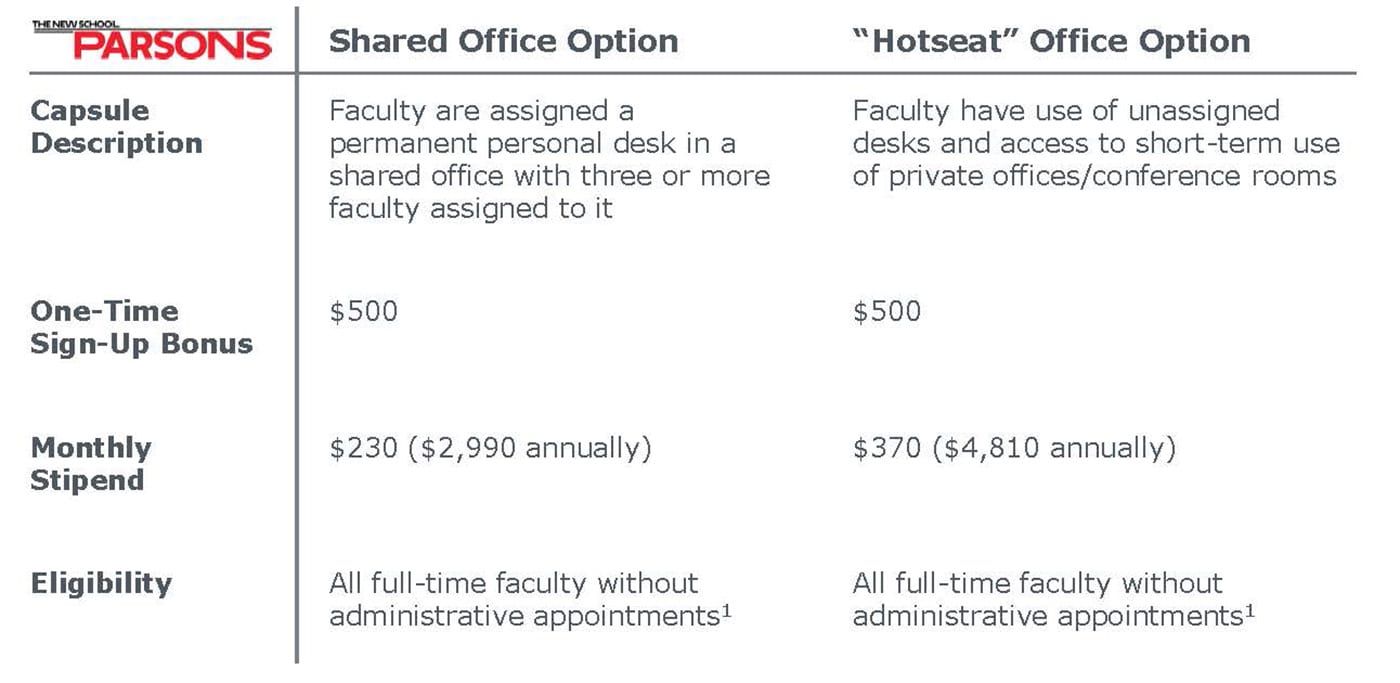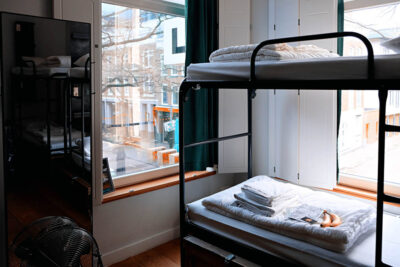- Resources /
- All /
- Research Report /
Incentivizing faculty to voluntarily vacate private offices
February 11, 2016, By Ann Forman Lippens, Managing Director, Research
As Facilities leaders seek to improve space utilization on campus, private faculty offices remain an area of opportunity and frustration. On one hand, technology advances and simple faculty preference result in faculty members increasingly working from locations across campus or from home. On the other hand, faculty’s right to private offices is a long-standing tradition, and few campus leaders are willing to mandate any changes.
Luckily, a few institutions have had early success incentivizing faculty to voluntarily vacate their private offices.
Incentive option #1: Provide an annual stipend for faculty who move to shared offices
The University of San Francisco (USF) offers a straightforward incentive program for any full-time faculty member willing to move to a shared office. Faculty receive an annual $3,000 lump-sum bonus for voluntarily vacating their private office in favor of a shared one.
Elements of the University of San Francisco’s faculty office withdrawal program
-
Voluntary enrollment
Faculty can voluntarily surrender their private offices
-
Guaranteed shared office space
Enrolled faculty are assigned a permanent desk in a shared office
-
Lump-sum bonus
Faculty who enroll receive an annual bonus of $3,000 in a single payment
The program has been successful from a participation and savings standpoint. Fourteen percent of full-time faculty at USF participate in the office withdrawal program. And their Facilities leader reports that every avoided new office saves the school $50,000 in construction costs—significant savings compared to the $3,000 per faculty incentive.
Incentive option #2: Establish scaled incentives to motivate faculty to use shared or hoteling space
Parsons School of Design is another school that has experimented with incentives to encourage faculty to give up their private offices. Parsons takes the incentives one step further, offering incentives scaled to the size of the workstation faculty ultimately move into. The first option is a shared office, like USF offers. The second is a “hotseat,” more commonly called a touchdown or hoteling workstation. The shared office option provides a permanently assigned desk, whereas hotseats can be reserved for up to a month at a time.
Faculty who enroll in either program receive a monthly stipend. To make the smaller workstation more compelling, Parsons set the stipend for the hotseat option nearly 50% higher than the stipend for the shared office option. In total, the monthly stipends for the hotseat option sum to $4,180 annually, compared to $2,990 annually for the shared office option. Both options provide faculty a one-time $500 sign-up bonus to outfit their home office.

The office withdrawal program at Parsons has been highly successful. Almost 75% of faculty are enrolled in one of the two office withdrawal options.
More Resources

Got overcrowding? How institutions find space—and how you can prepare.

Debunking three common (and counterproductive) myths about research laboratory design
